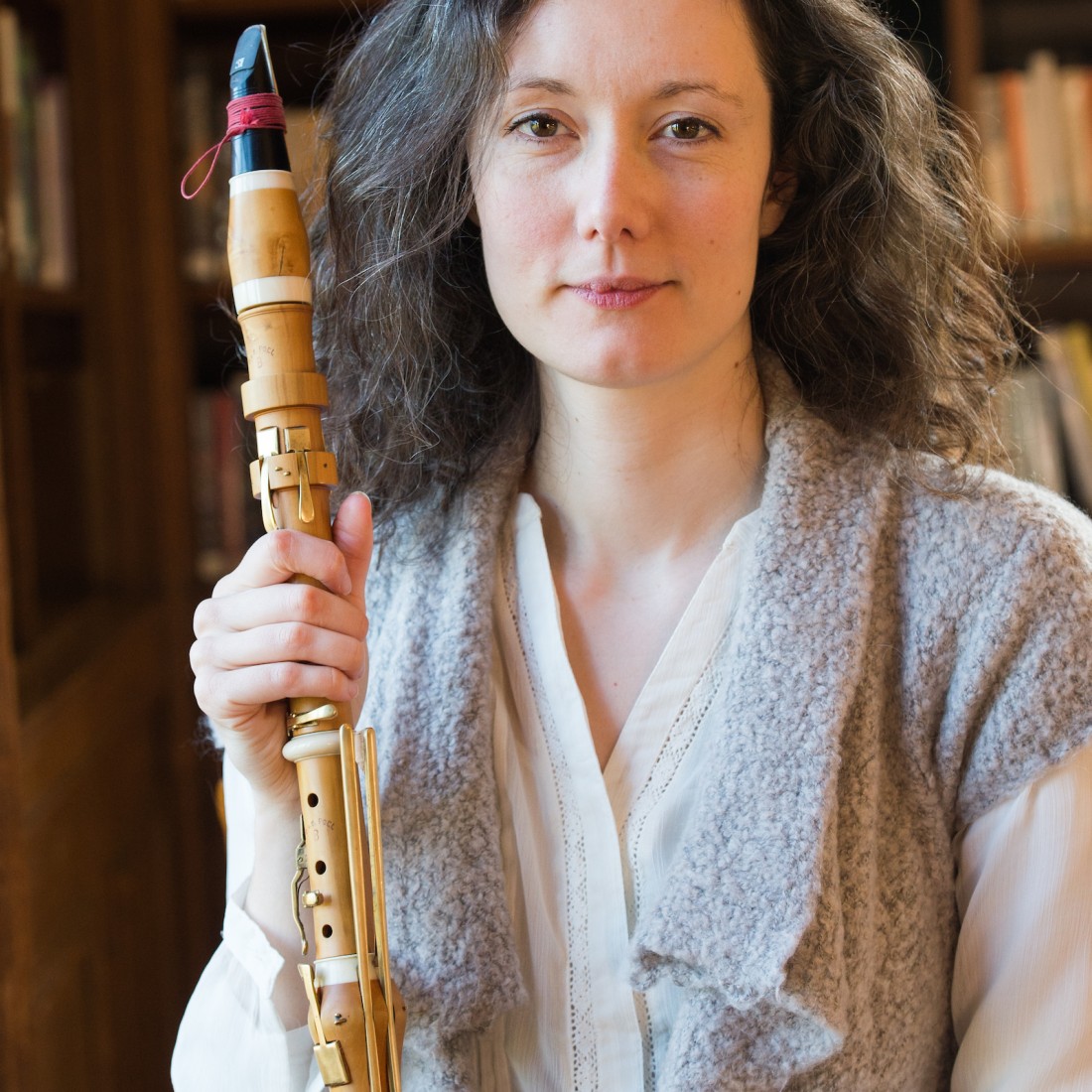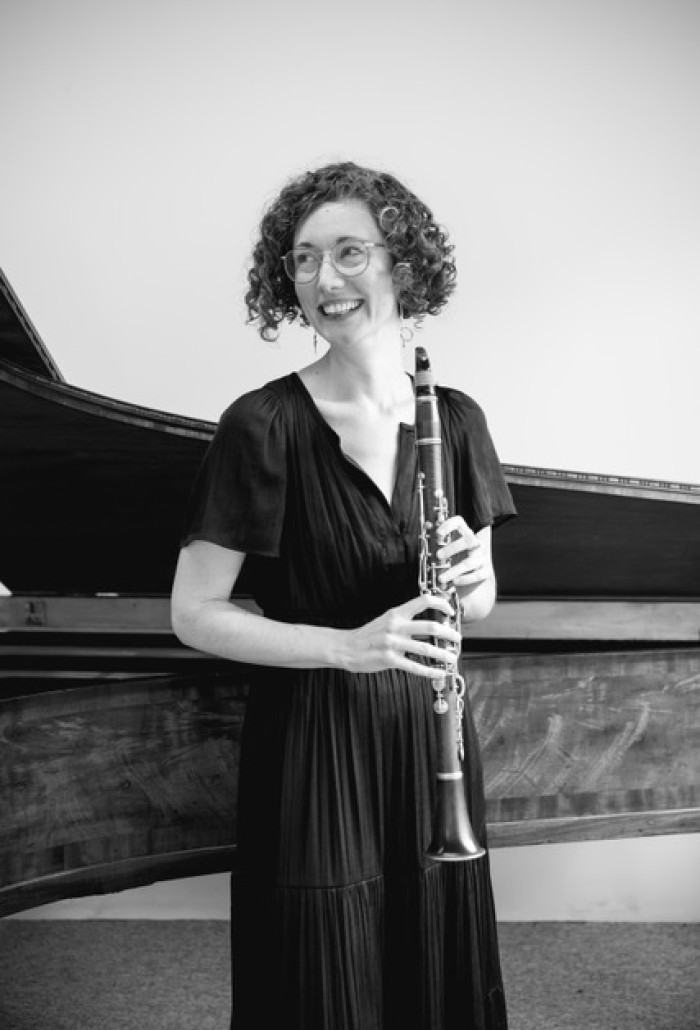
2022 - Present
This research cluster investigates aspects of embodiment in music performance: the intersection between brain, body and world through which musical understanding is developed. It explores the nature of embodied knowledge in performance practices, as well has how that knowledge can be perceived, communicated or transferred.
The cluster is a partnership between the Orpheus Institute and the University of York and comprises two projects: ‘Musical Touch and Vicarious Perception’, led by Catherine Laws, and ‘Baermann’s Body: Understanding Embodiment in Historically-Informed Performance’, led by Emily Worthington.
Musical Touch and Vicarious Perception

Musical touch and vicarious perception
This project investigates touch in musical performance:
- its significance in practice, in the relationship to an instrument, and its role in the development of performer identity;
- the vicarious, empathic experience of touch for audiences of musical performance.
The project
Touch is an important aspect of music-making. The nature and extent of the tactility involved in playing a musical instrument varies considerably, according to the bodily contact with and activation of the instrument. Nevertheless, for many performers quite how they touch their instruments – with hands or other body parts – is central to the nuance of performance. It is bound up with the proprioceptive navigation of the nuances of musical sounds: we feel our way around qualities of tone and timbre. Moreover, if a sense of musical selfhood is, at least in part, contingent upon attention to the subtleties of sound quality, and touch is – whether consciously or subconsciously – an important factor in sound production, then musical touch contributes significantly to the creative agency, and identity, of a performer.
This project therefore explores some of the ways in which touch acts as a form of performer knowledge and as a contributing factor in the production of musical agency and subjectivity. How does touch form a locus of embodiment in a performer’s interactions with objects (instruments and beyond), materials, and contexts?
The second aspect of this project is concerned with how touch in musical performance is significant for others: how it is experienced vicariously. Recent developments in embodied cognition suggest that we use the same parts of our brain to process observations of other people making movements or touching objects as when we do these things ourselves. This can blur the boundaries between the self and others. Research shows that, for some people, vicarious perception can cause a first-hand sensation on their own body; for example, a sensation of touch when seeing another person touching an object. We know that watching musical performance, or even simply listening to music, activates motor regions of the brain similarly to if we are ourselves moving. However, little is currently known about the extent to which, when we watch or listen to a musical performance, we vicariously represent, in our own brains, the musician’s touch and its related movements and feelings.
This project therefore explores aspects of the vicarious response to musical touch. How might performer touch contribute to the experience and significance of music for listeners and watchers? Might it form part of our empathic response? Do we, even, embody the actions of the musician performing?
Research Methods
The research project ‘Musical touch and vicarious perception’ has three strands. Primarily, it is taking place through artistic research in experimental performance. Alongside this lie an empirical study of vicarious perception of musical touch and a critical-theoretical strand of investigation drawing on philosophical and phenomenological understandings of touch. The three strands of research are informed by and informing each other: performance experimentation is feeding into the theoretical investigation and vice versa.
The research is focused primarily on the piano and other keyboard instruments. Performer-researcher Catherine Laws is collaborating with composers and other artists, collaboratively developing new performance pieces that explore and/or expose the significance of touch and its perception. She is also collaborating with a specialist in the psychology of touch and vicarious perception, Dr. Natalie Bowling, for the empirical research.
Key collaborators
- Natalie Bowling, psychologist; University of Greenwich, UK.
- Teresa Brayshaw, theatre maker, writer and Feldenkrais practitioner; Leeds Beckett University, UK.
- Nicholas Brown, Dublin-based composer and sound artist; Orpheus Institute.
- Juliana Hodkinson, Berlin-based composer; The Royal Academy of Music, Aarhus, Denmark.
- Lynette Quek, independent audio-visual artist; Singapore.
Baermann's Body: Understanding Embodiment in Historically Informed Performance

Baermann's Body: Understanding embodiment in historically informed performance
Historical embodiment is a developing area of primary research methods used by musicians working in Historically Informed Performance (HIP) for professional practice and academic research. It has long been clear that using our bodies, instruments, and artistic practice to explore historical musical practices gives an insight into the past, but methodological and epistemological theorisations of these methods have not kept pace with either advances in the artistic field or the wider discourse around practice-research.
The Baermann’s Body project uses a case study of the clarinettist Carl Baermann (1811–1885) as a starting point for an interdisciplinary theorisation of embodied research in HIP, drawing on the fields from historical acting to cognitive science. The project combines archival and artistic research, multi-media documentation and critical reflection around the research process with a wide range of digital and in-person collaboration and dissemination elements. The project will result in both a significant contribution to understanding of mid-19th century performance practices and a toolkit of concepts, methods and vocabulary that helps artistic researchers develop and communicate their work across disciplinary boundaries.
Baermann's Body: Understanding Embodiment in Historically Informed Performance is supported by the UK Arts and Humanities Research Council
Tags: performance, embodiment

